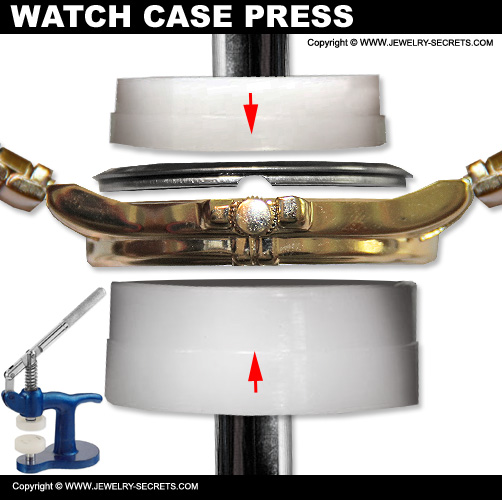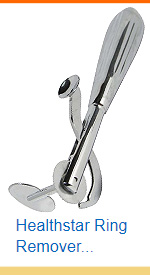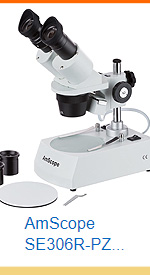DO IT YOURSELF JEWELRY REPAIRS AT HOME
DIY - HOW TO FIX AND REPAIR YOUR OWN JEWELRY AT HOME CHEAPLY
This post contains affiliate links. If you use these links to buy something I may earn a commission. Thanks! As an Amazon Associate I also earn from qualifying purchases.

Another repair?
You don’t need to run to the jewelry store for each and every jewelry repair.
In fact, there are lots of things you can do at home, on the couch. Granted, you may need to purchase a few tools for the job, but the good thing is, once you have these tools, you can use them over and over again, Saving you big bucks.
One bit of advice:
The repairs you are able to do at home are going to be simple repairs. I’m not having you buy a torch and a propane or oxygen tank. No way! Anything that is dangerous or requires special talent or technical ability is best left for the professionals.
Which are jobs like: ring sizings, stone tightenings, rebuilding prongs, solderings and the such.
Plus, when you’re dealing with gemstones and diamonds, utmost care is needed so you don’t damage or crack your expensive stones.
What kinds of repairs can you do at home?
Here’s the list…
- Buffing and Polishing
- Cleaning & Steaming
- Changing Watch Batteries
- Removing Watch Links
- Unknotting Chains
- Removing Kinks from Chains
- Tightening Jump Rings
- Changing Clasps
- Removing Watch Crystal Scratches
- Re-Gluing Loose Pearls
- Straightening Bent Earring Posts
- Reshaping Bent Rings
What tools will you Need?
- Polishing Cloth with Rouge
- Tarnish Remover
- Jewelry Cleaner
- Steam Cleaner
- Watch Tool Kit
- Straight Pins (Sewing Pins)
- Flat Nosed Pliers (2)
- Clasps
- Watch Face Polishing Cloth
- Jeweler’s Epoxy
- Exacto Knife
- Mallet
- Mandrel
That’s not so bad.
You could also pick up a jeweler’s kit that includes a mallet, mandrel, pliers and tons of other useful tools. Just to make life easier.
So let’s look at these jewelry repairs closer…
Buffing and polishing:
If you buy yourself a good polishing cloth, make sure you get one with rouge.
A rouge polishing cloth will help you remove surface scratches and dullness from pretty much any kind of metal.
You will be able to add a high polished glow to your gold with just a slight pressure as you polish.
Use the rouge side (inner cloth) first. Polish the surfaces good, and then use the outer cloth to fine tune it and remove the polish marks.
Doing this once a month will keep your rings bright and shiny.
Just realize that rouge is a polishing compound that jewelers use and it will Leave Black Residue on your Rings, Fingers and Clothing. You’ll need to Clean the Jewelry after you polish it to remove that reside from underneath the stones and in between the cracks.
Polishing your items (especially with a tarnish remover) will remove tarnish from gold or silver (as other types of metals don’t tarnish).
But if the items get tarnished too badly, or discolored, you’ll need a professional jeweler to buff if out and get in all the nooks and crannies.
Cleaning and steaming:
If your diamonds and gems are looking dull and don’t sparkle like they once did, it’s time for a thorough cleaning.
In fact, it’s past time for a cleaning.
If they look dark and lifeless, then they’ll need to sit in the cleaner for a while.
You should clean your jewelry at least once a Week. Cleaning your items often will keep the lotions, soaps, perfumes, hair spray, and shampoo from building up and blocking light.
There are plenty of great jewelry cleaners on the market. In fact, I have review posts dedicated to different cleaners, steamers and solutions. :)
You don’t need a top of the line commercial cleaner, you just need an ultrasonic cleaner that breaks up dirt particles.
A heater does help
Heat helps, but it’s not necessary if you use hot water and my special homemade cleaning solution! :)
If the diamonds and gemstones are stubborn and have a thick layer of dirt caked underneath them, you may need to invest in a good jewelry steam cleaner as well. That way you can blow the gunk out.
 |
 |
Cleaning your jewelry will also keep them from wearing down and eroding. Dirt has a nasty way of doing that.
Clean them, and they will last longer.
The good thing is, diamonds never dull up or remain dark and dirty for very long. You can always make them look brand new again. You just have to clean them.
After all, you wouldn’t wear your clothes for 7 days straight… So give your jewelry a break.
Give them a bath.
Changing watch batteries:
You can easily change your own watch battery at home, if you have the proper tools and equipment.
Luckily, all the tools you need can mostly be purchased in one slick, inexpensive watch tool kit.
(and maybe a watch case sealer as well)
To change your battery, you simply pop the back off your watch with either a watch case opener, a watch wrench, or some jeweler’s screw drivers.
Just slide the old battery out of the watch… Noting which way the battery is facing (upside down or right side up – Otherwise you could short circuit your board), and you put in the new watch cell.

If you need a battery conversion chart, you’re in luck, I made one for you! :)
Now pop the cover back on your watch, and you’re good to go.
Just be careful to align the watch stem with the groove in the case back so you don’t snap your stem off. That could get costly to fix.
And if the back won’t just snap on with a little pressure from your fingers and hands, you may need a watch case sealer.
A watch case sealer is a special tool that allows you to press all the pieces back together again. It seals the watch.
See below…
That’s the tool that jewelers use. It’s handy as hell.
Just be careful not to apply too much pressure. You don’t want to break the band, cover, or crush the crystal.
SNAP!!!!
Removing watch links:
A small screwdriver, or a watch link remover is needed if you want to add links or remove links from your watch.
It’s fairly easy to do… um, most times.
Watch links will normally be put together with 2 different types of fasteners: pins and screws.
See below…

Screws are the easiest to handle
You unscrew them (counter-clockwise) and slide them out.
Pins are a little bit more tricky since you’ll need a watch pin remover to gently push the pins out.
This takes a little practice, and a lot of patience so you don’t break the pusher, or bend the watch pin.
I’ve been doing watch links for over 23 years, and every now and then I still break the tool.
It happens!
Sometimes links are tough and won’t budge. Knowing the exact amount of pressure and force is crucial.
But, if you line up the tool properly, and the pin pushes through the hole perfectly straight, you should have no problems.
You will also need some pliers to pull the pin out the rest of the way.
Once the pins and links are removed, you’ll need to gently take away or add what you need, and then put the watch back together again by pounding the pin back into place.
A watch hammer and watch block is perfect for this job.
Learn more in my watch tools post here.
When it comes to links, you’ll never know if they’ll be easy or hard. Every watch is different, and sometimes the cheaper the watch gets, the more difficult the links are to remove.
But, if it saves you $25 from going to the jeweler, then it’s well worth the price to pay.
Unknotting chains:
Fine chains knot up easily. Some knot up so quickly that just by looking at them ties them up in a bunch.
So grab 2 straight sewing pins and that knot will be history.
Whatever you do, don’t pull on the chain. You’ll only make the knot tighter and harder to unravel.
Lay the chain down. Put one straight pin through a link and wiggle it to grab a hold. Jiggle it a tad to loosen that area.
Now put the other straight pin through the knot on the opposite side.
Wiggle them some more as you draw them apart.
The knot will eventually pull free…
With a little luck and a little wiggling, you should be able to loosen the knot enough to untie the chain.
Problem solved!
Removing kinks from chains:
Generally, the types of chains that kink up are the flat chains, or chains that lay flat.
And out of all of them, the number one chain to kink is:
Herringbone chains
Herringbone chains are thin and flat, with tiny sections and small pieces that weave in and out of each other. It gives the chain a little bend and shape so it lays nicely on your neck.

Sadly, when you bend a flat chain like this beyond the bending point, it kinks.
So how do you remove kinks from herringbones?
Patience, persistence, and luck.
You have to grab a section of the herringbone closely on either side of the kinked area.
Then gently, oh so gently, rotate the sections around, snapping them back into place one link at a time.
Don’t bend or rotate too much, you don’t want to bend the links further. Just nice gentle movements and a tiny bit of force.
The motions of your hands should rotate in the same direction: clockwise.
Rotate the links, moving them slightly up and down and side to side as the links maneuver back into place.
Sometimes it’s easy.
Other times it’s maddening.
Often you have to physically turn and manipulate each link one by one. But the good thing is, it can be done.
Once you get the kinks out, do note that it may be bumpy or loose in that area. That’s normal.
After all, you just took a flat object, twisted it up, and flattened it out again. Damage may show.
What you can do is to lay the herringbone flat on a cloth with another cloth above it, and then gently roll the bumpy section flat again with a pen, pole, can, or any other round tubular object.
This helps give the chain a nice smoother appearance.
Sadly, there is nothing you can do with the looseness.
It will always be a little looser there and it will probably kink easier in that same spot again.
If it keeps kinking, or if it’s too tied up and can’t be fixed, a jeweler can solder that spot, or better yet, cut the chain into sections and make bracelets out of them.
Herringbones are a pain.
It’s a good thing that herringbones aren’t very popular anymore. They’ve seen their light of day.
Tightening jump rings
Chains and bracelets often have unsoldered links holding them together.
If the chain gets pulled or caught, those links will stretch and open up. It could cause your chain, bracelet or pendant to fall or get lost.
The great news is, tightening these links and jump rings is pretty simple stuff.
Just grab yourself 2 sets of long nose pliers and they’ll be fixed in a second.
Grab one side of the link near the opening with one of the pliers, thread the dangling links or parts of the bracelet through the ring, and with the other set of pliers, then close the ring back up.
Your goal is to join the ends together by turning one hand clockwise and the other hand counter clockwise.
Move the ends together until they are snug, closed and tight. As such…

You don’t want to leave any slight gaps in the ring, for the chain may slide through. Get it right, and tight.
If the link gets too deformed or looks bad, simply remove that link and reconnect the rest of the chain.
It may be a link shorter, but at least it’s wearable.
Changing clasps:
Clasps are usually connected with unsoldered jump rings like shown below. And just like you would tighten a jump ring, these would be no different.
Unhook the broken clasp by using the pliers to open the ring just large enough to slide the clasp free.
Now purchase a new clasp either at your local hobby store (like Michaels), or order them online at Amazon. Put the new clasp on facing the same way as the old one did (so you can hook the chain properly), and tighten the ring back up again.

There are two main types of clasps on the market: spring ring clasps, and lobster claw clasps.

Just note that unless you have that jump ring soldered closed, it could open up and pull free again.
All good things to consider.
I usually recommend having jump rings soldered so you don’t take the chance of Llosing your valuable pendant.
Removing watch crystal scratches
Depending on the type of crystal that you have on your watch, you may be able to remove scratches from it.
If the face is plastic, as a lot are, you’re in luck.
They sell watch crystal polishing cloths specifically made to rub scratches out of crystals.
This only works if the face is plastic. They don’t work on glass or sapphire crystals.
It’s simple and easy to do. Just follow the instructions that come with the cloth, and your crystal will be scratch free.
Re-gluing loose pearls:
Yes, you can re-glue loose pearls from rings, earrings, pendants and more. All you need is the proper tools and glue (jeweler’s epoxy).
Pearls are glued onto a post (or peg), that’s what holds them in place.
But before you just slap any old glue on, there are some things you need to do:
- Remove the old glue first
- Carefully re-glue the pearl
- Apply pressure until dry
Take a closer Look…

1) Remove the old glue first
Grab an exacto knife or some similar sharp item, and gently break the old glue off the bottom of the pearl. DON’T SCRATCH THE PEARL or SCRAPE ACROSS THE SURFACE! They are very delicate and will mar or scratch easily. Just gently pry the old glue away.
Do the same thing with the peg or post. Clear off all old debris so the pearl has a nice clean contact.
2) Carefully re-glue the pearl
Carefully mix up the epoxy as the instructions explain. Then use a toothpick or some similar item to dab some glue back into the pearl hole and around the base.
Do the same with the peg or post. Put a little on and around the peg and bottom.
Don’t put too much, because you don’t want the glue to push out the seams and cover your beautiful jewelry.
Just put enough so it will secure the pearl in place.
Now push the pearl back on the peg as far as you can and…
3) Apply pressure until dry
Once you push the pearl onto the post, keep steady pressure on the pearl. Hold it down with your fingers for a couple of minutes.
Jewelers often use a little vice clamp that holds the pearl for a bit. But if you hold it with constant pressure, it should be enough to fasten your pearl for good.
Keep it there until the glue hardens or dries enough so the pearl doesn’t rise off the post. A clean tight fit is the goal.
Once glued, set it aside for a day or two until it completely dries inside.
If you see any excess glue escape, try to wipe it up before it dries on the nacre.
Keep in mind, pearls are organic and if you get them wet, they will expand and can come loose. Don’t wear them in the shower or the pool.
Gluing pearls is easy, you just need a steady hand and a little bit of rressure. :)
Straightening bent earring posts:
Have a bent earring post?
Well you’re in luck. All you need to fix it is a pair of flat nosed pliers.
You can straighten out a post in the blink of an eye, as long as you don’t snap the post off in the process. :(
Hold the earring securely in one hand, and grab the post with the pliers. You want to gently bend the post back into position again, smoothly, gracefully, and using a slight bit of force.

Don’t be too quick or jerky.
Gold and silver is pretty malleable and with steady, delicate pressure you should be able to maneuver the post into an upright position again.
You may have to readjust the pliers, direction and position, but it’s not that difficult.
If you snap the post off entirely, don’t worry. Take it to a jewelry store and have them solder it back on. At least you tried.
Chances are, if the post isn’t too damaged or cracked, you will be able to make the post straight.
Granted, it may not be perfectly straight, it may still be a little crooked, but it still should do the trick and allow you to wear your jewelry again (no one will notice the post).
Reshaping bent rings:
Be careful with this repair. If your ring has diamonds or gems, make sure you don’t damage them or crush them.
YOU WILL BE USING A HAMMER!
This repair works best on plain gold bands or etched wedding rings, or where the bend is only at the bottom of your ring (the shank).
Get yourself a couple of tools: A Mallet and a Steel mandrel (ring stick).
Put as much of the ring on the mandrel as you can. Slide it down and apply delicate force to push it down to help round the ring out slightly.
When you get it down as far as you can, it’s time for hammer time.
Pick up the hammer and gently tap at the bent area. Tap the bend and around the bend.
Don’t pound on any of the diamonds or gemstones or prongs.
Hammer just the gold or silver part.

Hammer around the area making it flatten down. Do a couple of strikes, and then remove the ring from the stick, and put it back on facing the other way. That’s because the mandrel is tapered and if you don’t alternate directions your ring will come out tapered as well.
Tap a little. Turn your ring around. Tap it some more. Little by little.
Just don’t hit it too hard in any one spot as you don’t want to leave dents or flat edges.
Once you get it as round as you can, polish it up with either a polishing cloth or a buffing wheel.
BE WARNED!!!
If you have gemstones or diamonds in the mounting, You could harm them. Just shaping your ring could create enough force or pressure to snap the stones or crush the diamonds.
It’s a delicate job and that’s why plain bands work the best. It’s safer.
If the ring is bent too much, take it to the jeweler and have a pro Fix it.
They’ll make it look brand new again. :)
There you go…
12 easy home jewelry repairs that takes minutes to do, and are way cheaper than what a jewelry store will charge you.
Other things that come in handy…
Some other goodies that are great and will keep you from spending tons…
Plastic ring sizers:
Ring sizers are great for making your loose rings fit snugger. You slide them on and you’re done. They do no harm to the ring and it only takes a second.
Earring backs:
You can never have enough earring backs. Women are always losing them.
When your backs are loose, slide off too easily, or just don’t hold very securely… Get some new ones.
Amazon carries a wide assortment of earring backs, from heavy backs, medium backs, and plastic backs that hold your earring to your ear so they don’t droop down.
Chain extenders:
These necklace extenders are awesome for when you want to make your chain a little longer. They will usually add on an extra inch or two.
All you do is hook the clasp and you’re done.
You can get an assortment set with different colors and different lengths for a pretty cheap price.
They come in very handy.

Lastly…
Download my free ring sizer chart.
That way you can find your exact finger size, or see what size your rings are.
You never know when you’ll need this info.
Any rings you order online will ask you for your correct ring size…
Now you’ll know.
Cheers! :)

























I have a pair of 14k gold large hoop earrings that were bent in several places from not storing them properly when traveling. Nonetheless, while I was able to reshape back to circles, I can’t get rid of the bend marks. Is it possible to restore the earrings and remove the bends?
Hi Germma. No, if the earrings are hollow inside, and dent, there is no real way for a jeweler to pop that dent back out to make it look good again. That’s the biggest downfall to hoops, they’re not solid. But if they were solid, they’d be too heavy for your earlobes, so there is no win-win here. Double check with the company you bought them from, many times the manufacturer will guarantee their hoops for life. It’s worth a try. Good luck. -Richard
This is so informative -thank you – yet my issue is not listed. I recently purchased a necklace and it broke. I cannot find a replacement and I ADORE it. It is not ‘real’ or expensive, cost about $30. A surge protector sparked and the spark snapped out a section about 3″. It is a chain, but so thin and delicate you cannot see any link. There are many glass and pewter beads on it, but they stay in place, they do not slide around. I do not so much care about the 3″ piece as connecting the ends of the necklace so I can wear it again. I have a picture, but no way to post it here. Any idea how I could repair it? TIA
Hi Kim, take it into a jewelry store (independent is probably best) and see if they can fix it, replace it, or even restring your necklace. I’m sure there’s something that can be done. :) -Richard
Hi how to I get dents out of large gold hoop earrings they are hollow ta
Hi Daphne. Most hollow hoop earrings cannot be fixed. But take them into a local jeweler to know for sure. -Richard
Hello, I have a gold ring with diamonds in it. One of the rows in the ring got pulled and cracked. The row has diamonds in it and as though it is still holding together, I’m afraid one wrong move may cause it to break completely or me losing one of the diamonds.
Is there anything I can use to seal the crack without me taking to a repair shop?
Thank you!
Hi Lena. No. If the metal is cracked, do not wear the ring. You will end up losing all your diamonds. Take the ring off, and let a jewelry store repair it. -Richard